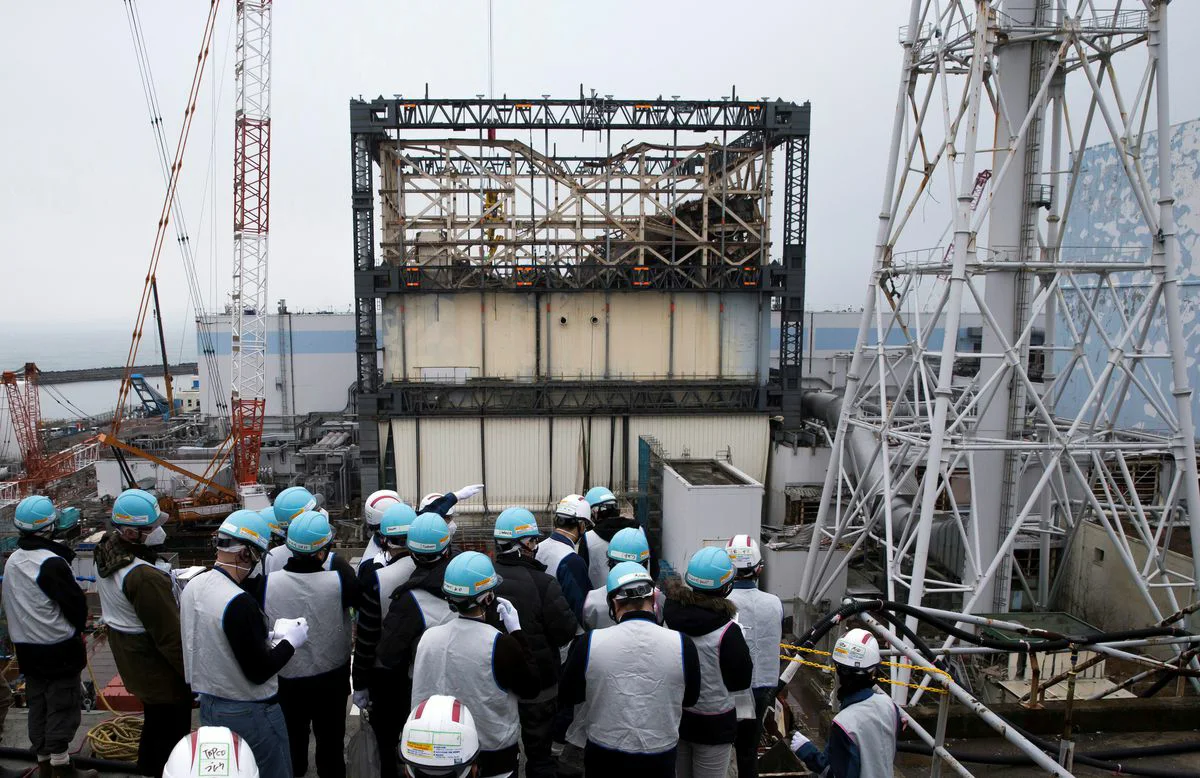Japan regulators approve release of Fukushima water into sea
- 공유 링크 만들기
- X
- 이메일
- 기타 앱
Japan regulators approve release of Fukushima water into sea
TOKYO, July 22 (Reuters) - Japan's nuclear regulators have approved a plan to release into the ocean water from the wrecked Fukushima Dai-ichi nuclear power plant, the government said on Friday.
The water, used to cool reactors in the aftermath of the 2011 nuclear disaster, is being stored in huge tanks in the plant, and amounted to more than 1.3 million tonnes by July.
The regulators deemed it safe to release the water, which will still contain traces of tritium after treatment, the foreign ministry said in a statement.
Plant operator Tokyo Power Electric Company (9501.T) will face additional inspections by regulators, it added.
Tepco plans to filter the contaminated water to remove harmful isotopes apart from tritium, which is hard to remove. Then it will be diluted and released to free up plant space and allow decommissioning to continue.
The plan has encountered stiff resistance from fishing unions in the region which fear its impact on their livelihoods. Neighbours China, South Korea, and Taiwan have also voiced concern.
Failed discussions and agreements
The Japanese government in April 2021 announced its decision to proceed with plans for the deliberate discharge of nuclear waste water from the Fukushima Daiichi plant. Even beyond the 900 tons of nuclear waste the Russian’s dumped in 1993, Japan plans for more than at least 1.2 million tons to be mixed with sea water and discharged via a sub-seabed pipeline into the Pacific Ocean. The discharges are scheduled to take 30 years, but are almost certainly going to last much longer.
In 1993, the Japanese government called the Russian dumping extremely regrettable. Now, the Japanese government justifies its plans to discharge over 1 million tons of radioactive waste water as “necessary” because storage space is not available, and that the water is not contaminated but “treated”. Nearly 30 years apart, the dezinformatsiya, perfected by the Soviet Union and Russia and used to justify waste dumping, is mirrored by the disinformation from Tokyo.
In early 1993, the International Atomic Energy Agency (IAEA), already knew of Russia’s plans to dump nuclear waste, but did not intervene and chose not to inform Tokyo. Today, the IAEA has formed a partnership with the Japanese government to provide cover for its plans and to ensure, as it states, that the discharges will be done safely and in line with international practice. It continues to play the same historical role as set down in its 1957 statute of supporting and promoting the interests of the nuclear industry, not protecting the environment or public health.
Since the 1970’s Greenpeace had been challenging nuclear sea dumping. After years of investigations and campaigning, the Russian navy’s secret operations to pump nuclear waste into the sea were challenged and filmed by the Nuclear Free Seas campaign team on board the Motor Vessel Greenpeace ship on 18 October 1993. While the MV Greenpeace sat off the Russian coast after the Russian military ship TNT27 and other navy vessels returned to port to pick up another cargo of nuclear waste, their nuclear dumping exposed to world attention, the Russian’ government announced on 22 October that it would halt further disposal plans. The TNT27 remained in port.
By the time the Greenpeace ship had docked in Japan, the government of Morihiro Hosokawa had announced a policy change. It would no longer advocate nuclear waste disposal at sea. Instead, it would support an amendment to the London Convention at the November 1993 meeting at the IMO that would prohibit all nuclear waste disposal at sea. Both then and now, Greenpeace International representatives were at the IMO meeting pushing for an end to radioactive pollution of the marine environment.
I played a very minor role at that time, chasing the then IAEA Director Hans Blix, from Seoul to Tokyo with a copy of a telex (it was three decades ago!) from the Russian government informing Blix of their plans for nuclear dumping. The IAEA for some reason had chosen not to inform the Japanese government. Travelling from South Korea to Japan, I still remember as if it was only yesterday how moved I was watching my Greenpeace colleagues John Sprange, Twilly Cannon, Dima Litvinov, Thomas Schultz, captain Pete Wilcox and the rest of the crew of the MV Greenpeace confronting the Russian navy on NHK TV .
One further result of Greenpeace International, Greenpeace Germany, and Greenpeace Japan’s exposé of Russian dumping was that the Japanese government took the decision to financially support the building of additional storage and processing facilities for nuclear waste in the Russian Far East. This was a point that Greenpeace International has emphasised over the years at IMO meetings and drew the parallels for the Fukushima water crisis.
- 공유 링크 만들기
- X
- 이메일
- 기타 앱





